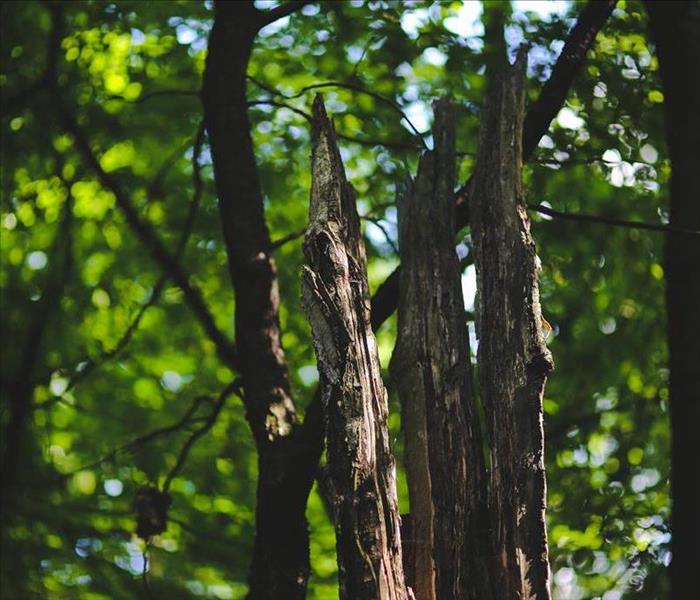How Tree Removal Prevents Storm Damage
5/19/2020 (Permalink)
Do you live in an area where storm and bad weather conditions are frequent? Is your house situated next to trees and you are concerned about the safety of your home? You might want to consider removing any trees near your house that could be capable of damaging your home. Falling trees and limbs cause millions of dollars in destruction each year damaging homes, cars, and downing power lines. Take proactive measures by inspecting the surrounding trees regularly and remove them if necessary. Any trees that show hazardous signs of weakness need to be removed before storm season or they could topple.
Signs to look out for include:
- Unsafe proximity to power lines or your home
- Deep hollows or holes
- A large number of dead branches, especially if the branches are large in diameter
- Cracks in the trunk of the tree, especially vertical cracks
- Decay affecting more than half of the tree
- Prevalent trunk rot, mushrooms, or other fungi
- Leaning trunks, especially if the leaning trunk has exposed roots on one side
Not all trees grow the same, some are more prone to storm damage than others. For example, a tree with shallow roots growing in soft soil could easily fall over onto your property with the aid of strong winds. It is also possible for trees to grow roots strong enough to damage the foundation of a house, create cracks in the sidewalks, or plug up septic systems. The most common types of storm damage include:
- Branch failure, where branches break away from the tree trunk, falling to the ground or getting trapped in foliage.
- Blow-over, where the tree heavily leans to one side and/or topples over completely.
- Root failure, where the roots are not able to anchor into the soil correctly, this can contribute to a blow-over.
- Crown twist, where there is pressure on an asymmetrical treetop that causes branches to split or warp.
You might also want to consider pruning these trees, which can prevent many problems. Quick removal of damaged, diseased, or dead plant parts helps limit the spread of harmful disease and insects, and can reduce the chance of future storm damage. However, over-pruning can weaken a tree significantly.
There are some instances where removal of a tree is absolutely necessary, especially when the tree lacks any structural integrity or there is a decline in health. Remove any trees around your property when it has major decay or significant damage from a past storm, failure to remove the tree can prove a dangerous threat to your family and home. If you failed to remove a tree before it fell over and damaged your property, do not worry! You can call SERVPRO of North Nashville for any storm damage needs. We’re faster to any disaster, highly trained storm damage specialists, and we have the resources to handle storms and disasters. We are always happy to help!





 24/7 Emergency Service
24/7 Emergency Service
